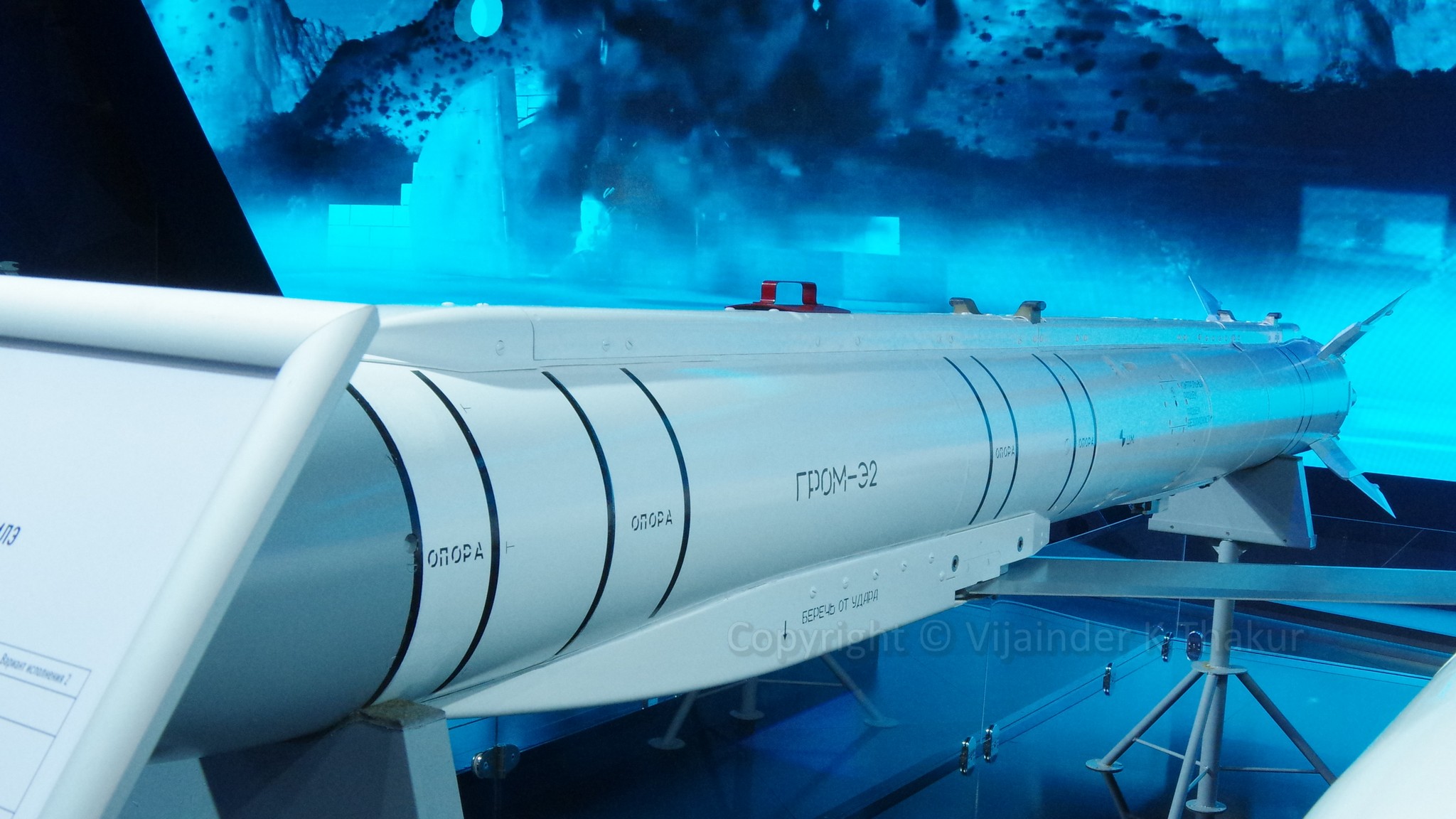The Telegraph reports that Russian forces have stepped up long-range precision attacks on Ukrainian forces using the 120 km range Grom-E1 guided missiles.
These missiles allow Russian Aerospace Forces (RuAF) Su-30SM and Su-34 fighters to strike targets deep within Ukrainian territory while staying outside the range of Ukrainian AD systems and AMRAAM-armed F-16 fighters.
According to the Telegraph report, Grom-E1 winged missiles have been used to attack targets in Mirnograd, Kherson, and Kharkiv.
In contrast to the 120 km range of the Grom-E1, Ukraine’s French-supplied Hammer bomb, an analog of the Grom-E1, has a range of about 64 km. This forces Ukrainian Air Force launch platforms (Mig-29, Su-27) to enter the engagement envelope of Russian S-300 and S-400 AD systems, as well as Su-30SM and Su-35S fighters armed with RVV-SD missiles.
Russia’s first use of the Grom-E1 was reported in early September following an attack on Kharkiv, during which the Trade Center and the Sports Palace, both of which had been converted into military facilities, were struck.
The Grom family of air-launched weapons is a variant of the Kh-38 missiles and includes the Grom-E1 guided missile, and the Grom-E2 guided glide bomb.

Kh-38 Missile Family
The Kh-38/Kh-38M is a family of air-to-surface short-range rocket-propelled guided missiles for precision strikes, developed to succeed the Kh-25 and Kh-29 missile families.
Work on the creation of the Kh-38 started in the 90s at the Technical Missile Corporation (TMC).
The Kh-38 is a universal modular missile that can be fitted with different seekers, such as semi-active laser homing (SALH), radar homing, thermal imaging (TI), and satellite navigation (SATNAV). The missile features foldable fins for storage in internal weapons bays, such as the ones on the Su-57. It can be launched using a variety of helicopters and airplanes.
The Kh-38 is a Russian analog of the AGM-179 Joint Air-to-Ground Missile (JAGM), which was developed to replace the current air-launched BGM-71 TOW, AGM-114 Hellfire, and AGM-65 Maverick missiles.
Grom Family Winged Weapons
Unlike the Kh-38 family missiles, which feature fins, Grom family missiles feature foldable wings, giving them longer range and the ability to approach the target from any direction.
Russia positions them as an analog of the American JDAM-ER.
Both Grom-E1 and Grom-E2 feature a normal aerodynamic configuration and a common cylindrical body with an ogive nose cone, folding swept-back mid-body wing, and an aft actuator assembly.
The weapons can be carried externally or internally in bomb bays of fifth-generation air-combat platforms.
Grom-E1 Specifications
The Grom-E1 missile has a launch mass of 594 kg, a length of 4.2 m, a body diameter of 0.31 m, and a wingspan of 1.9 m.
The missile features a 315 kg high-explosive (HE) fragmentation warhead coupled with an impact fuze. It uses two-stage rocket propulsion comprising booster and sustainer rocket motors.
The Grom-E1 and E2 missiles integrate the solid-fuel engine from the Kh-38ME family of short-range air-to-surface missiles.
The Grom-E1 can be released from an altitude of 500 to 12,000 m and a speed of 140 to 445 ms. It can strike targets at a distance of 10 – 120 km. Because of the aerodynamic lift from its wings, the missile can engage its target from any direction, even turning around 180° to strike the target from the rear.
The missile’s average flight speed under initial launch conditions (height: 12,000 m, speed: 445 m/s, range: 120 km) is 300 m/s. It can manoeuvre sustaining 4 g loads.
The missile uses INS (inertial navigation system) with SATNAV (Glonass) updates for navigation. As such, it can only be used against static targets, unlike the Kh-38 family, which can also be used against moving targets using a TI or SALH seeker.
Grom-E2
The air-launched Grom-E2 missile has a slightly higher launch mass of 598 kg but the same length, body diameter, and wingspan as the Grom-E1.
In the Grom-E2, the sustainer rocket motor of the Grom-E1 is replaced with another fragmentation warhead weighing 165 kg at the rear of the fuselage. Consequently, the total warhead weight goes up to 480 kg.
The Grom-E2 missile can be launched at ranges of 10 – 50 km, from altitudes of 500 m -12,000 m, and at launch speeds between 140 m/s and 445 m/s.
Conclusion
The stepped-up use of the Grom-E1 by Russian forces suggests that the missile is now in serial production.
The Grom-E1 fills a critical gap in the long range precision strike capability of the Russian forces.
Russian UMPK bombs such as FAB-250 and FAB-500 cannot strike targets beyond 80 km. So far, Russian forces have likely used the Kalibr missile for precision attacks on targets at 120 km range.
The 1,500 km-plus-range Kalibr is a much more expensive missile than the Grom-E1. Its lower cruising speed, around 230 m/s, compared to the Grom-E1’s 300 m/s, makes it more susceptible to engagement by Ukrainian air defense systems.
Weighing 594 kg, the Grom missile is considerably lighter than the Kalibr missile, which weighs 1,300 kg or more. The Grom-E1 missile can be launched from the RuAF’s Su-57, Su-34, and Su-30SM fighters, unlike the Kalibre, which can only be launched by bomber platforms.
Serial production of the missile and its component commonality with the Kh-38 missile family would make the Grom-E1 much more affordable than the Kalibr cruise missiles.
The Grom-E1’s ability to attack its target from any direction, along with its high cruise speed, likely makes the missile as difficult to engage as the UMPK-kitted FAB bombs.
Large-scale usage of the Grom-E1 by Russian forces will facilitate more effective interdiction of supplies and manpower, thereby further degrading Ukrainian defenses.
- Vijainder K Thakur is a retired IAF Jaguar pilot, author, software architect, entrepreneur, and military analyst.
- VIEWS PERSONAL OF THE AUTHOR
- Follow the author @vkthakur




